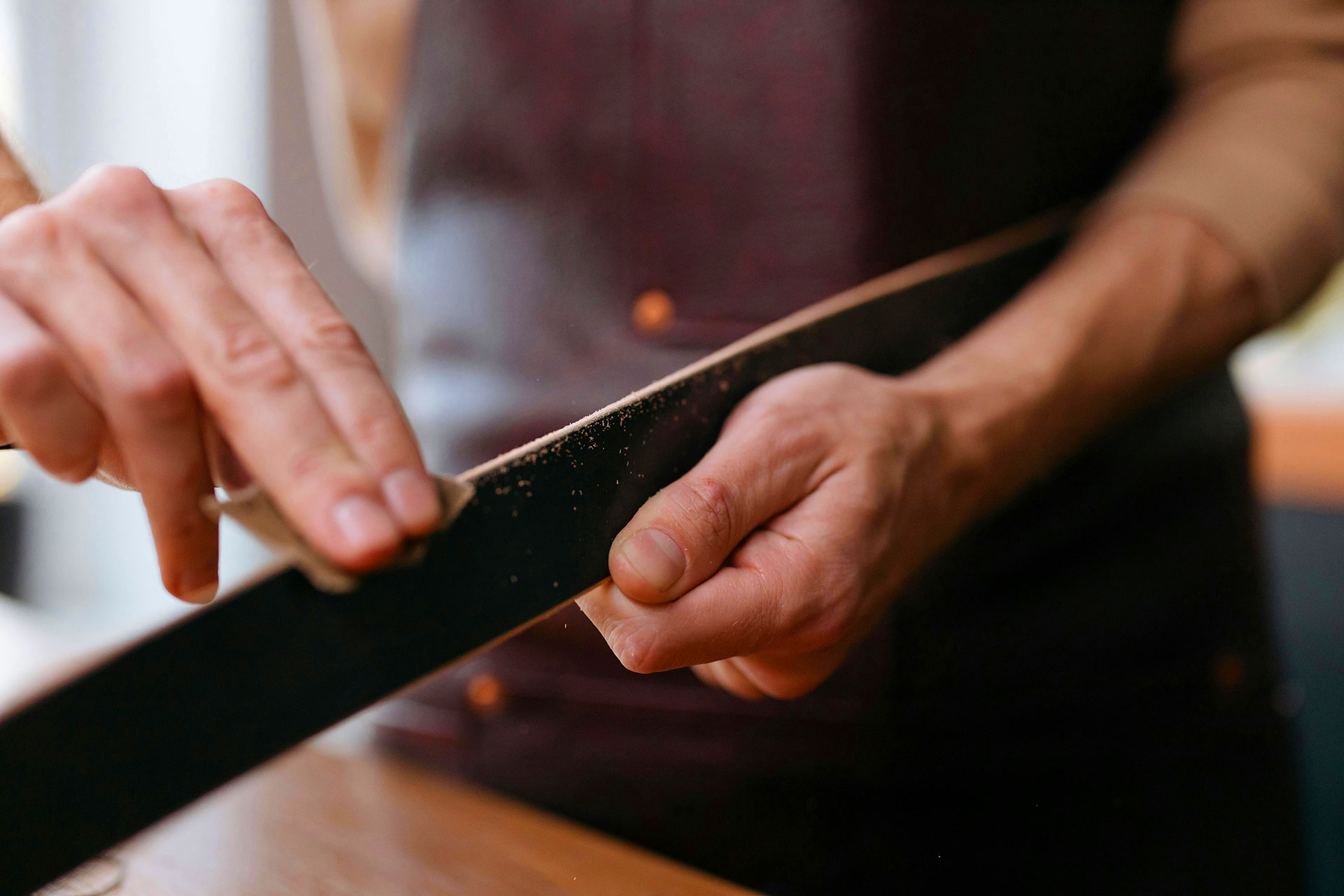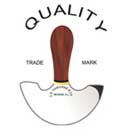
19 Oct Think Your Tools Are Sharp Enough? Think Again
A clean cut is quiet. No tearing. No drag. Just a confident line that follows your hand. If you’re forcing a blade through leather, wood, or fabric, your tools aren’t sharp, they’re negotiating. Sharpness is not a luxury; it’s the foundation of accuracy, safety, and speed.
Sharpness Is a System, Not a Moment
Most people sharpen only when a tool feels dull. Pros don’t wait. They build a rhythm. Hone before the job, touch up during, strop after.
That cadence keeps edges keen and your workflow steady. The real gain isn’t a glamorous mirror polish. It’s repeatability, knowing the edge will behave the same way today as it did yesterday.
Telltale Signs Your Edge Isn’t There Yet
Small clues betray a tired blade. Watch for them early:
- Fuzzy edges or crushed fibers instead of crisp cuts
- The blade skitters on curves or pulls off your line
Notice two of these and your tool is already costing you time and material.
Angles, Burrs, and Reality
Perfect geometry matters. Too steep a bevel and the edge is durable but stubborn. Too shallow and it’s razor-fine, but fragile. The sweet spot depends on the task: skiving knives benefit from leaner angles; utility blades tolerate a bit more meat. And don’t skip burr management.
Raise it, chase it, then erase it with a strop. Leaving a wire edge is an invitation to micro-chipping and fast dulling.
A Simple Routine That Actually Works
You don’t need a museum of stones to stay sharp. You need consistency:
- Set the bevel with a reliable medium grit (around 1000). Refine at 3000–8000 until the scratch pattern evens out.
- Finish on a loaded strop. Light, even strokes, let compound do the work. Test on scrap: clean slice, no drag, no wandering.
Done right, this five-minute ritual outperforms occasional marathon sessions.
Don’t Forget the Other Culprits
It’s not only knives. Pricking irons, punches, and awls lose edge integrity too. A quick polish on their working faces reduces friction and prevents ragged holes. Mallets matter as well, choose weight that drives cleanly without bruising. And keep cutting mats fresh; a chewed-up surface blunts edges faster than you think.
Safety, Speed, and the Cost of “Good Enough”
Dull tools demand force. Force invites slips. Slips invite bandages. A sharp edge is safer because it obeys light pressure and tracks predictably. It’s also cheaper.
Fewer ruined parts. Less rework. More flow. The real economy in the shop is precision.
Make Sharpness Part of the Craft
Think your tools are sharp enough? Think again, then test, tune, and prove it. Build a small, steady routine. Respect angles. Retire the burr. Keep edges alive between jobs.
When sharpness becomes habit, your cuts turn quiet, your lines stay true, and your work starts looking timeless, because you removed the guesswork and left only the craft.


